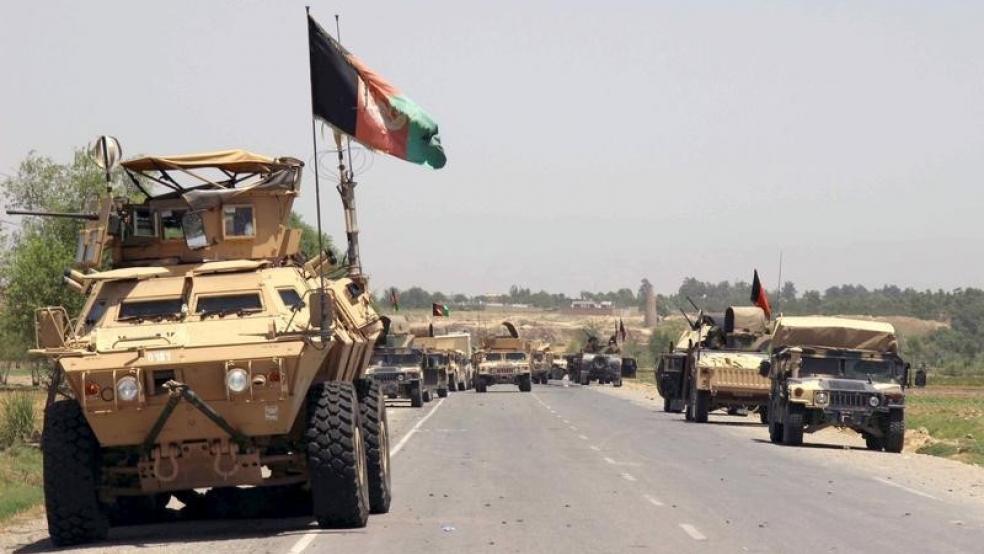Since 2002, the U.S. has spent roughly $2.8 billion to build and repair Afghanistan’s network of roads and bridges, yet most of that work has either been destroyed or left in serious disrepair, according to a new report by the Special Inspector General for Afghan Reconstruction.
SIGAR for years has documented the costly and often failed efforts at nation building since the U.S. invaded Afghanistan in the wake of the 9/11 attacks. Those include tens of billions spent on government offices, schools, police facilities and major infrastructure that have largely gone for naught.
Related: The States With the Worst Highways in America
Over the weekend, the independent government watchdog group issued its latest report showing that the U.S. Agency for International Development (AID) spent at least $1.9 billion on eight star-crossed programs intended to rebuild the country’s road infrastructure. The U.S. also developed plans for other road projects costing hundreds of millions of dollars to spark short-term employment through road construction and counterinsurgency efforts.
Citing a report from the Afghan Ministry of Public Works, however, SIGAR concluded that 20 percent of the roads have been destroyed in battle while the remaining 80 percent are in varying states of disrepair or deterioration. What’s more, the Kabul to Kandahar highway, a vital artery, is “beyond repair” and needs to be rebuilt. USAID has estimated that unless properly maintained, it would cost about $8.3 billion to replace Afghanistan’s overall road infrastructure.
The report comes at a time when federal and state officials in the U.S. are struggling to come up with sufficient funds to finance new major highway, bridge and mass transit projects. Although Congress last December approved a $305 billion five-year extension of the highway bill, the American Society of Civil Engineers says there is still a glaring $2 trillion gap in needed infrastructure spending in the U.S. over the next five years.
As part of its audit, SIGAR inspected 20 segments of road in Afghanistan and found that 19 had damage ranging from deep surface cracks to destroyed bridges and roads – the results of insurgent military attacks or bad weather. Seventeen segments were either poorly maintained or not maintained at all.
Related: US Finds Its Missing Health Care Facilities in Afghanistan
These and other findings are hardly surprising, and fit a pattern in Afghanistan of wasteful spending, widespread corruption, lack of accountability and incompetence on the part of local officials. Moreover, a war of insurgency by Taliban forces has grown in strength and led to years of destruction of roads, bridges, schools and other government structures.
As The Fiscal Times previously reported, a review of 36 inspection reports by SIGAR, covering 44 reconstruction projects worth $1.1 billion, found serious problems with most of them. Two thirds of the projects failed to meet minimum requirements of the contracts, a third were ruled structurally unsound or hazardous, and 25 percent had been delayed for as long as two and a half years.
Last summer, SIGAR reported that for months, the U.S. government was literally unable to say with any certainly where 29 of 79 health facilities in the far northeastern province of Badakhshan were actually located. Those health facilities were being funded through a $260 million program sponsored by AID and the World Bank.
Related: Trump Proposes $1 Trillion for Infrastructure Without Raising Taxes
While the U.S. government has initiated a number of programs to try to maintain roads and other infrastructure, including efforts in 2007 and 2013, those program largely flopped. And U.S. officials even had trouble accounting for the location of some of the improvements financed by USAID and the Department of Defense.
The SIGAR report warned that the steady deterioration of the road infrastructure could “weaken the Afghan government’s reach throughout the country, inhibit commerce, and restrict the freedom of movement of Afghans.” And if the Kabul to Kandahar highway were to become totally impassable, “the central government would collapse.”





